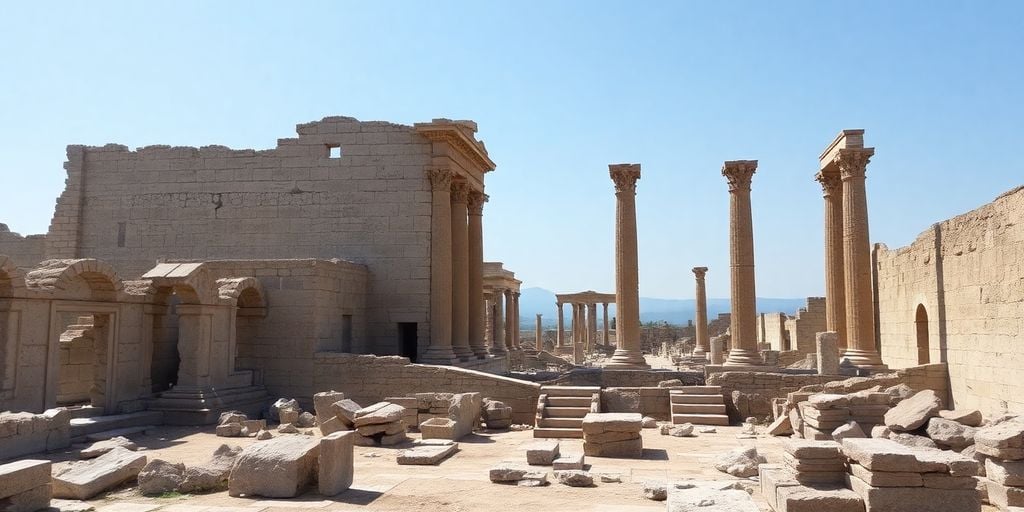Archaeologists in North Macedonia have unearthed the extensive remains of an ancient city, potentially the lost capital of the Kingdom of Lyncestis. Initial findings suggest a settlement far older and more significant than previously believed, with evidence pointing to occupation from the Bronze Age through the Roman era. The discovery includes a large acropolis, a possible theater, a textile workshop, and numerous artifacts, including coins minted during Alexander the Great’s lifetime.
A Glimpse into a Lost Kingdom
Recent excavations at the Gradishte archaeological site near Crnobuki village have revealed a settlement that challenges previous assumptions. Initially thought to be a 3rd-century BCE Macedonian outpost, advanced technologies like LiDAR and ground-penetrating radar, coupled with the discovery of a coin dating to 325-323 BCE, indicate a much earlier and more significant urban center. Researchers now believe the site could be Lyncus, the ancient capital of the Kingdom of Lyncestis, an autonomous Macedonian kingdom that predates its incorporation into the Macedonian Empire.
- Deeper History: Evidence suggests occupation from the Bronze Age (c. 3300–1200 BCE) to as late as 670 CE.
- Royal Connections: The site may be the birthplace of Queen Eurydice I, Alexander the Great’s influential grandmother.
- Strategic Location: Situated along ancient trade routes, the city likely played a crucial role in regional politics and culture.
Remarkable Discoveries Unveiled
The excavation has yielded a wealth of artifacts that paint a picture of a sophisticated society. These include:
- Stone axes
- Pottery fragments, including West Slope pottery and Thasian amphorae
- Game pieces
- Textile-working tools
- A clay theater ticket
- A coin minted during Alexander the Great’s lifetime
- A ceramic shard with a vulgar Greek graffito, offering a rare glimpse into everyday speech.
Hellenistic Influence and Architectural Marvels
Further exploration has uncovered the remains of a Hellenistic-period mansion, characterized by well-preserved Ionic capitals and bases, painted interior walls, and a private bath with a water-supply system. These features are among the northernmost examples of such classical architectural elements known in the Hellenistic world, suggesting a significant Greek presence and cultural influence extending deep into the Balkans. The architectural layout resembles elite Hellenistic mansions found in the Mediterranean, indicating the residence belonged to a wealthy individual.
Ongoing Research and Future Prospects
Archaeologists from North Macedonia’s National Institute and Museum–Bitola, in collaboration with California State Polytechnic University, Humboldt, are continuing their work at the Gradishte site. They emphasize that they are only beginning to understand the full scope of the discovery, likening their current findings to a few pebbles in a vast mosaic. Future excavations are expected to reveal more about the city’s role in early European history and its connections to the rise of the ancient Macedonian state.
Sources
- Lost capital of ancient kingdom unearthed in North Macedonia, Archaeology News Online Magazine.
- Ancient Greek Mansion and Inscriptions Discovered in North Macedonia, GreekReporter.com.
- News – Ancient City Unearthed in North Macedonia, Archaeology Magazine.
- ‘Lost’ ancient capital where Alexander the Great’s grandmother was born may have just been uncovered, Live Science.
- Humboldt Archaeologists Help Uncover Ancient City | Humboldt NOW, Humboldt NOW.





